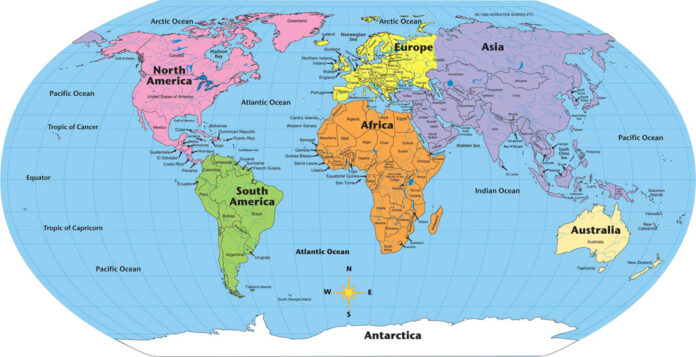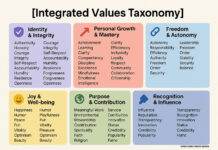In The Culture Map: Breaking Through the Invisible Boundaries of Global Business, Erin Meyer outlines eight cultural dimensions that impact how people interact and work together across cultures. Each dimension represents a spectrum, helping professionals understand and navigate cultural differences in communication, decision-making, and leadership. Here are the eight dimensions:
1. Communicating: Low-Context vs. High-Context
- Low-Context: Cultures that communicate straightforwardly and explicitly, with the message being clear and detailed. Examples include the United States and Germany.
- High-Context: Cultures that rely on context, background, and non-verbal cues. Messages are often implicit, requiring interpretation of indirect language. Japan and many Middle Eastern countries are examples.
2. Evaluating: Direct vs. Indirect Negative Feedback
- Direct: Cultures that provide frank, honest feedback, which is often more negative and explicit. The Dutch and Germans are known for direct feedback.
- Indirect: Cultures where feedback is softened, with criticism often wrapped in positive language. Countries like Japan and Thailand use more indirect feedback.
3. Persuading: Principles-First vs. Applications-First
- Principles-First: Cultures that value reasoning from general principles before applying them to specific cases. Often found in countries with an emphasis on theoretical reasoning, like France and Italy.
- Applications-First: Cultures that focus on practical applications and use examples to persuade before introducing broader concepts, such as the United States.
4. Leading: Egalitarian vs. Hierarchical
- Egalitarian: Cultures where power is distributed equally, and leaders are accessible, often encouraging a flat organizational structure. Examples include Sweden and Denmark.
- Hierarchical: Cultures that have clear status differences and a top-down decision-making process. Leadership structures are more formal and pronounced, such as in China and India.
5. Deciding: Consensual vs. Top-Down
- Consensual: Cultures where decisions are made by group consensus, with discussions involving multiple viewpoints. Germany and Japan lean towards consensus-based decision-making.
- Top-Down: Cultures where decisions are made by leaders with little group input, common in the United States and China.
6. Trusting: Task-Based vs. Relationship-Based
- Task-Based: Trust is built through professional interactions and competence. People rely on performance and task completion. Common in cultures like the U.S. and the Netherlands.
- Relationship-Based: Trust is built through personal relationships and shared experiences. Countries like Brazil and China emphasize personal relationships as a foundation for trust.
7. Disagreeing: Confrontational vs. Avoids Confrontation
- Confrontational: Cultures where open disagreement is acceptable and does not harm relationships. France and Israel are known for being comfortable with open disagreement.
- Avoids Confrontation: Cultures where harmony is maintained, and disagreements are handled indirectly or avoided. Japan and Indonesia are examples.
8. Scheduling: Linear-Time vs. Flexible-Time
- Linear-Time: Cultures that prioritize punctuality, strict deadlines, and sequential task completion. Germany and Switzerland are known for linear time management.
- Flexible-Time: Cultures that see time as fluid, adapting schedules and deadlines to changing circumstances. Countries like India and Nigeria are more flexible with time.
Using These Dimensions in Practice
The Culture Map provides a framework for understanding how each dimension impacts communication and collaboration. By identifying where their own culture falls on each spectrum, professionals can better adapt their strategies when working with teams from different backgrounds.
Let’s map American culture across the dimensions and contrast it with Indian culture:
1. Communicating (Low-Context vs. High-Context)
- United States: Low-context → Communication is explicit, clear, and direct. “Say what you mean.”
- India: Higher-context → Messages often rely on shared understanding, indirect cues, and non-verbal hints.
👉 Contrast: Americans prefer straight talk; Indians often expect listeners to “read between the lines.”
2. Evaluating (Direct vs. Indirect Negative Feedback)
- United States: Relatively direct, though softened with positives (“feedback sandwich”).
- India: Indirect → Criticism is often delivered subtly, with face-saving language to avoid embarrassment.
👉 Contrast: An American may view Indian feedback as vague; an Indian may see American feedback as blunt.
3. Persuading (Applications-First vs. Principles-First)
- United States: Applications-first → Use practical examples and concrete data, then draw conclusions.
- India: More principles-first (influenced by long philosophical traditions) → Theory and holistic frameworks often come before practical application.
👉 Contrast: Americans jump to “what works now”; Indians may want to understand the “why” before moving forward.
4. Leading (Egalitarian vs. Hierarchical)
- United States: Egalitarian → Managers act like “coaches,” open-door culture, employees can challenge ideas.
- India: Hierarchical → Strong respect for authority, clear status differences, decisions often follow rank.
👉 Contrast: Americans expect to challenge the boss; Indians expect to defer to the boss.
5. Deciding (Consensual vs. Top-Down)
- United States: Fairly top-down but still consultative — managers involve teams but can decide quickly.
- India: Top-down → Decisions usually come from senior leaders; subordinates may hesitate to push back.
👉 Contrast: Both lean top-down, but in the U.S., subordinates expect to be heard; in India, subordinates usually wait for direction.
6. Trusting (Task-Based vs. Relationship-Based)
- United States: Task-based → Trust is built by working together efficiently and delivering results.
- India: Relationship-based → Personal bonds, family ties, and networks are crucial for building trust.
👉 Contrast: Americans trust you if you “do good work”; Indians trust you if they “know who you are.”
7. Disagreeing (Confrontational vs. Avoiding Confrontation)
- United States: Moderately confrontational → Open disagreement is acceptable if expressed respectfully.
- India: Avoids confrontation → People tend to avoid saying “no” directly, preferring to keep harmony.
👉 Contrast: Americans value healthy debate; Indians may avoid disagreeing openly to preserve relationships.
8. Scheduling (Linear-Time vs. Flexible-Time)
- United States: Linear-time → Time is money, punctuality matters, deadlines are firm, schedules rule.
- India: Flexible-time → Time is more fluid, multitasking is everyday, deadlines adapt to relationships and context.
👉 Contrast: Americans want strict timelines; Indians adapt schedules to changing circumstances.
Summary:
- U.S. → Low-context, egalitarian, task-oriented, linear, moderately direct.
- India → Higher-context, hierarchical, relationship-oriented, flexible, indirect.











